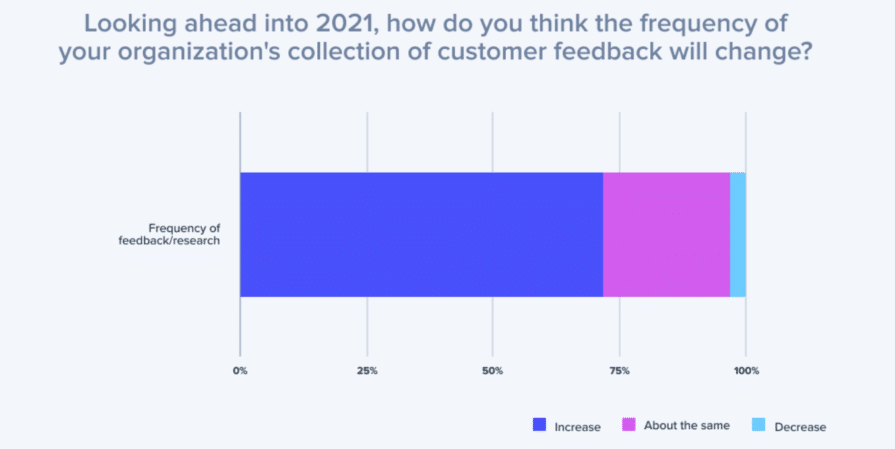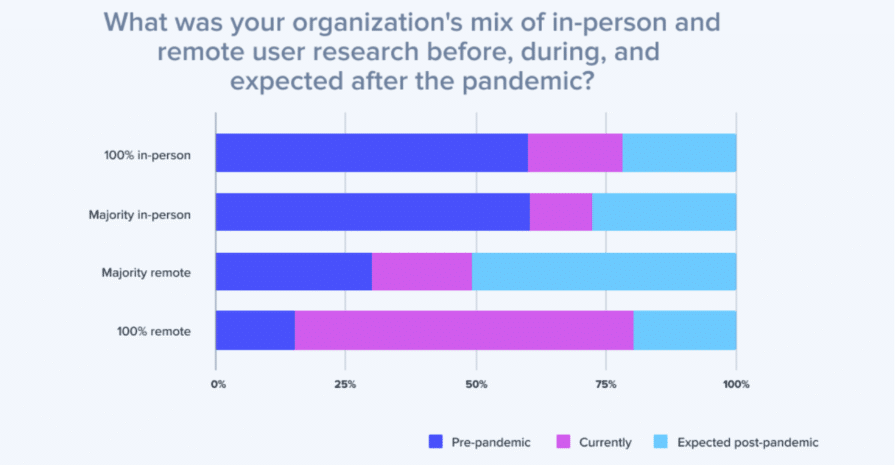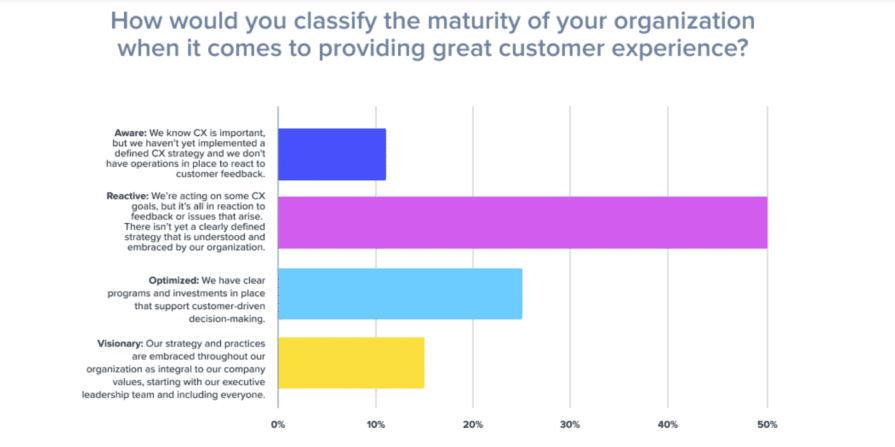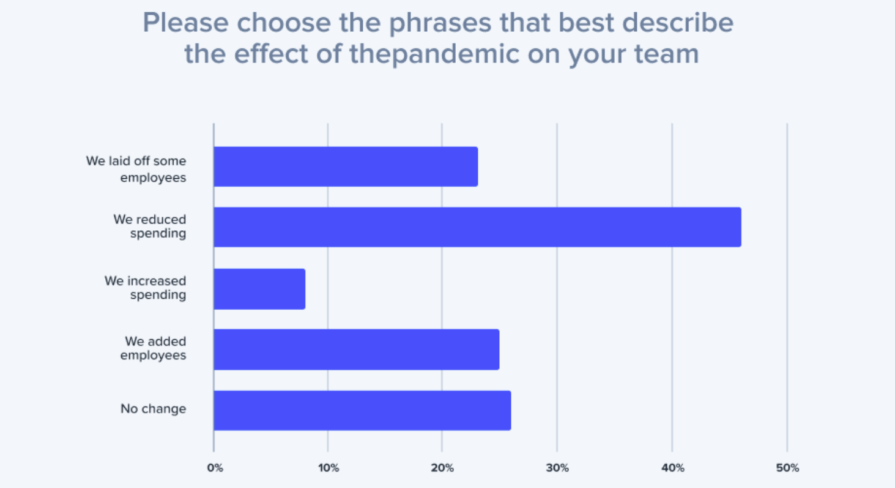The COVID crisis has put customer experience (CX) and empathy center stage for brands and businesses. New research from on-demand human insights firm UserTesting shows that businesses fall into one of two categories—those doubling down on CX and those scaling back on it—and that customer feedback collection is on the rise, with 72 percent of organizations stating that they plan to increase their investments in 2021.
The vast majority (71 percent) noted that they’re either in-process or have completed their digital transformation. This is a sharp increase from 2019 survey results, in which only 56 percent said they were that far along in their journey. This indicates that the pandemic has helped to motivate teams to dedicate more time and resources to digital transformation to improve overall CX.
The firm’s newly released 2021 CX Industry Report uncovers three key trends influencing customer experience today:
Feedback has gone remote
The remote-centric business environment brought about by the pandemic is, for many, here to stay. A remote-first approach to customer feedback is a new strategy that many companies will continue to embrace into the new normal, and for good reason. The survey revealed that moving to online user research can cut costs by an average of 40 percent. The impact on a company’s bottom line is also significant. Moving to online user research was found to increase revenue by about 40 percent. Many survey respondents noted that the pandemic will permanently reduce the amount of in-person research they do moving forward.
The pandemic has put the focus on CX
Although consumers’ interactions with brands have changed, expectations have never been higher. The survey found that companies acknowledge an increase in the use of customer feedback, which drove more investments into customer feedback and user research. Both trends are likely to continue. Despite the efforts to improve CX, many survey respondents noted their companies are still in the early stages of establishing their CX practices with 60 percent admitting that their organization doesn’t have a formal CX strategy in place or only reacts to issues as they happen.
Teams are doing more with less
Time and resources were significantly impacted by the pandemic which, in many cases, meant more work with fewer resources. Nearly 70 percent of those surveyed reported reductions in spending or workforce resources due to business changes caused by the pandemic. Fewer resources impacted nearly half of those surveyed with 53 percent reporting an increase in workload. The pandemic also required many companies to quickly pivot their product or service offerings. Forty-six percent of respondents reported a change to their product roadmap due to the pandemic.
“We have been through a year unlike any other where organizations have had to adapt to changing customer needs. The past year has shown that organizations must prioritize customer understanding and empathy to build long term customer loyalty,” said Janelle Estes, chief insights officer at UserTesting, in a news release. “The takeaway for every size organization should be that talking with and listening to your customers cannot take place only during times of crisis but should be part of regular business practices.”
Download the full report here.
In this eighth annual Customer Experience Industry Survey, we asked over 4,700 professionals from around the world across a wide variety of industries how their organizations are approaching customer experience and conducting CX research.












